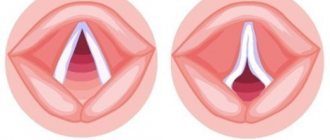Alcohol dependence (alcohol addiction) is an integral component of alcoholism, which is the result of the patient’s mental and physical dependence on ethyl alcohol. Alcohol is a high-energy product that is addictive in humans. Alcohol abuse leads to a number of social problems, loss of personality, and deterioration of health.
To understand what alcohol addiction is, you should understand in detail the causes of the disease. Although genetic factors and physical addiction have a strong influence on a potential alcoholic, the social environment and mental state often become decisive. Whether to abuse alcohol or not - everyone decides for himself.
Psychology of deviation
Alcohol addiction is caused by a person’s physical and psychological dependence on alcohol. Alcoholism, like drug addiction, is nothing more than a painful attraction that negatively affects the body.
As the experience of narcology shows, treating alcoholism with medication helps a person get rid of the addiction only for a while. The hypnotic technique helps to achieve only long-term remission. But it is possible to overcome uncontrollable drunkenness and start living a full life.
From a psychological point of view, the reason that led a person to alcoholism must be sought in the patient’s subconscious. The patient needs to seek help from a professional, since the psychological dependence on alcohol is much stronger than the physiological one. This is a disease that rarely anyone can overcome on their own.
Physical dependence on alcohol occurs due to regular consumption of strong drinks. In addition to craving for alcohol, the patient develops a certain psychological portrait of an alcoholic. Each person who does not drink is an individual, while alcoholics who regularly drink alcohol become similar to each other.
From a psychological point of view, such a person experiences a process of leveling his personality, low self-esteem, and complete indifference to everything that happens.
Forms of addictive behavior:
Non-chemical addictions:
| Chemical addictions:
|
An intermediate place between chemical and non-chemical addictions is occupied by food addiction (overeating and starvation), since in this form of addiction biochemical mechanisms are directly involved.
Alcohol can cause not only psychological, but also physical dependence, becoming a component of metabolism. Endogenous alcohol is present in the body as a metabolic product, regardless of whether a person drinks alcohol or not. Endogenous alcohol concentrations are quite low
The presence of endogenous alcohol obviously plays a role in the development of physical dependence, which is very individual. It develops differently in different people, which is associated with their biological characteristics. There are people who are genetically more or less predisposed to developing physical dependence on alcohol. The study of the transcultural aspect of this problem shows that, despite the fact that in a number of population groups the ability to develop physical dependence is sharply represented, the rate of development of this dependence is also influenced by a number of other factors. Thus, studies conducted by Korolenko in the Far North showed that physical dependence develops faster in people who came to the North from lower latitudes. Thus, there is a complex of external conditions that predispose to the development of physical dependence, which include factors such as a change in the usual stereotype, separation from the family, from persons exercising control and authority, partial sensory deprivation, and climatic and meteorological extreme factors.
In the development of addiction, the characteristics of alcohol consumption and drinking styles that contribute to a more rapid formation of addiction are important. This refers to the use of large doses of alcohol at the beginning, exceeding its tolerance.
Physical dependence
has the following characteristics:
1. loss of control;
2. uncontrollable (biological) attraction to drinking alcohol, emphasizing the influence of drive, which has no psychological content;
3. withdrawal symptoms;
4. inability to abstain from drinking alcohol,
5. change in tolerance.
These symptoms may occur in combination, such as loss of control and signs of withdrawal, or inability to abstain and signs of withdrawal, or appear independently, such as signs of withdrawal. Combinations may be different.
Portrait of an alcoholic
In modern psychiatry, there are several psychological characteristics characteristic of alcoholics.
- Refusal to admit that there is alcohol addiction. Many have encountered this when an alcoholic, even the most inveterate and binge-drinking one, will deny the existence of such a problem.
- Selfish behavior similar to that of a child. In this case, the rule applies: “I will do what I want, and no one can tell me about this.” A person who develops alcoholism begins to reject all his family and friends. For a drunkard, they are aggressors, so often alcoholics are left completely alone.
- Inconsistency. Almost all drunkards become careless and frivolous people. Today they say they are quitting drinking forever, and tomorrow they reach for the bottle again.
- Complete inactivity and passivity. Alcoholism does not lead to this condition immediately, but gradually. It all comes down to the fact that a person has only one pressing problem: where to get a drink. Other values cease to matter to him. Such people go with the flow and eventually lose everyone and everything.
Alcohol and drug addiction is a direct path to subpersonality
Alexander Kravchenko: There is a very good saying about this: “God protects the careful, but the devil protects the drunk.” That is, if you use it, you make a deal, you make a deal, as they say, reap the benefits...
Andrey Kovtunov: And here an interesting question arises: saves for what purpose? Within the framework of our Game, within the framework of our hypothesis, God protects a person so that an Angel is born. Why does the devil protect people? For your business.
Tatyana Zinchenko: In order to use it in your own interests, of course.
Elchin Akhmedov: So that the cow brings milk longer.
Tatyana Zinchenko: And more.
Alexander Kravchenko: There is a very good expression on this matter. Dutch doctor, cardiologist and resuscitator (he has 26 years of experience), Pim van Lommel, studied the syndrome of near-death experiences, he said: “I confidently declare that consciousness lives after the death of a person.”
This is what the devil saves for: the body is often used as a tool; after it is worked out, consciousness lives. That is, the devil is interested in the consciousness living and the Angel dying.
Andrey Kovtunov: Again, within the framework of our hypothesis, our Game (we talked about this in both the first and second Game), in essence, we are talking about subpersonalities.
Alexander Kravchenko: Yes.
Main stages
A brief profile describing behavior and symptoms will help you determine at what stage of the disease the alcohol addict is.
I
At this stage, alcohol addiction can be quickly treated. Such a person does not suffer from emotional breakdowns and aggression if there is no alcohol in the house. Newly-made alcoholics rarely but regularly drink in groups. The doses are insignificant, and a person can easily give up alcohol, replacing it with his favorite activity: sports, reading books, going to the cinema, etc.
With prolonged abstinence from drinking, this addiction goes away on its own. If a drinker cannot stop, the first stage of alcohol addiction quickly passes into the second.
II
At this stage, a person develops a pronounced craving for alcohol. This is an obsession, in anticipation of the fulfillment of which a drunkard can show aggression, high excitability, and irritability. As a result, alcohol consumption becomes more frequent, and its doses increase, since previous doses no longer bring such pleasure.
For such people, drinking no longer becomes a dangerous product, but a vital necessity. At first, a person drinks alcohol only 2-3 times a week, then every day. As a result, he becomes a chronic alcoholic.
III
The last stage of alcohol addiction is characterized by destruction of the brain and complete degradation. Chemical dependence sets in when the patient can no longer live a day, sometimes even an hour, without a glass of vodka. For 50 grams of alcohol, he is ready to do any act. All levels of the patient's health are affected.
Alcohol addiction
Today you can often hear arguments in favor of drinking alcohol. For example, red wine, half diluted with water, is used as a radioprotector, and the amount and duration of use is prescribed by the doctor. Everyone knows that when the body is hypothermic or frostbite, drinking alcohol has a positive effect. When there is a loss of strength, sluggishness of the digestive organs, small doses of alcohol “for appetite” have a beneficial effect. In case of severe psychological trauma, shock, acute vascular weakness - if it is impossible to provide emergency medical care - alcohol is also used as a means of reflexively increasing the activity of the respiratory and vasomotor centers.
There is now evidence to suggest that alcohol has a protective effect against coronary heart disease. However, this applies to people of mature age: men over 35 years of age and women who have already reached menopause. In this case, a positive effect is achieved only by consuming very small quantities - up to 10 milliliters of pure alcohol and no more than once a week.
The psychopharmacological properties of alcohol are widely used by people in stressful situations. It is known that during the war, soldiers on the front line received 100 grams of vodka. Although this impaired shooting accuracy and coordination of movements, it changed the mood. By the way, alcohol acts as a means of increasing aggressiveness and reducing fear, not only in people, but also in animals, which is well demonstrated in experiments on rats. It is known: in the rat community there is a clear hierarchy - leaders, outcasts and rats occupying an intermediate position. However, under the influence of alcohol, outcast rats begin to claim the place of leader: they are the first to grab food, push others away from a safe place, etc.
The use of alcohol or drugs causes a change in a person's state of consciousness. The need to change the usual level of one's consciousness manifests itself very early, even in childhood. It’s not for nothing that children like games so much, which impair coordination of movements and change perception. Everyone knows how much children love swings and carousels; they often ride on them to the point of dizziness and sometimes nausea. This is probably similar to the mechanism of the “concentration reflex” in an infant when he sucks a pacifier. The resulting state of stupor distracts the child from the state of physical discomfort and external stimuli. The baby also likes the state of free fall, when an adult throws him into the air and picks him up on the fly.
Older children themselves try to find an opportunity to experience these unusual sensations. They "fly" from the roof of the barn; lightly holding onto the railing, jump over 5-6 steps, etc. Wanting to change the state of consciousness, children press on the eyeballs, carotid arteries, and solar plexus area. Some elements of hypnotic techniques also serve the same purpose: a “magic” gaze, a game of staring contest, a game of “Freeze!”, unexpected “scare”, etc. The desire to go beyond the framework of the usual, everyday, to “try on” the role of another human, that is, to live, as it were, another life, is deeply embedded in each of us.
All alcoholic drinks contain ethyl alcohol, a chemical compound that is quickly absorbed into the blood through the stomach and intestines. When alcohol enters the bloodstream, it immediately begins to act on the brain and spinal cord, inhibiting or weakening the activity of the central nervous system by binding various neurons. Alcohol binds to the receptors of those neurons that perceive the neurotransmitter GABA (γ-aminobutyric acid). GABA transmits an inhibitory message - an instruction to stop excitation. When alcohol binds to the receptors that normally sense GABA, it apparently blocks some of the neurons, thereby helping the drunk person relax.
At first, ethyl alcohol acts as a depressant on those areas of the brain that are responsible for self-control and the ability to critically assess the situation; people become more relaxed, talkative and often more friendly. Because their internal control is lost, people may feel relaxed, confident, and happy. As higher doses of alcohol are absorbed, it begins to depress completely different areas of the central nervous system, the ability to reason sensibly is lost, the speech of such people becomes less clear and coherent, and their memory suffers. Many become too emotional, noisy and aggressive.
The further stage of intoxication is characterized by more significant impairment of motor functions and slower reactions. People stagger when standing or walking, and are unable to perform even the simplest actions. Their visual images begin to blur, this is especially reflected in their lateral vision, and problems arise with hearing. As a result of all this, people who drink too much alcohol have great difficulty driving a car or solving even basic problems. The degree of intoxication is determined by the percentage of alcohol in a person's blood. Thus, a given amount of alcohol will have less of an effect on a larger person than on a smaller person. Gender also affects blood alcohol levels. Women's bodies contain less of the gastric enzyme ethanol dehydrogenase, which breaks down ethyl alcohol in the stomach before it enters the bloodstream. Therefore, women are more susceptible to intoxication than men, with equal amounts of alcohol consumed.
Disturbances that occur during various states of intoxication can be correlated with the content of ethyl alcohol in the blood. When the blood alcohol content reaches 0.09% of blood volume, a drunk person begins to become intoxicated. When blood alcohol levels rise, more serious problems begin to appear. If the alcohol level reaches 0.55%, death is likely. Most people, however, black out before they can drink that much.
The effect of alcohol on the body decreases only when its content in the blood decreases. Small amounts of alcohol are broken down or metabolized in the liver into carbon dioxide and water, which are eliminated from the body through exhalation through breathing and directly through waste. Each person's liver functions differently, so the time it takes to get sober varies from person to person. Despite popular belief on the matter, only time and metabolism can make a person sober. Drinking strong black coffee, washing your face with cold water or shaking your face cannot speed up the process.
Although alcohol consumption is legal, alcohol poses one of the biggest dangers to society. Many people develop a need for alcohol abuse, or long-term alcohol dependence, colloquially called alcoholism.
There are three stages of alcoholism:
1. The initial stage is characterized by mental dependence on alcohol, an increase in tolerance to alcohol, the appearance of palimpsests, manifested in partial oblivion of individual events and one’s behavior while intoxicated. At this stage, the transition from episodic to systematic drunkenness occurs. Individuals show changes in the course of cognitive mental processes: there is a decrease in memory processes, at the beginning of retention, and then memorization, impaired attention and decreased performance.
2. The advanced stage is characterized by an uncontrollable, compulsive (obsessive actions) attraction to alcohol. During this period, tolerance to alcohol reaches its maximum, withdrawal syndrome forms, and physical dependence on alcohol appears. Severe sleep disturbances are noted. Individuals show signs of personality decline: neurosis-like manifestations of mental activity or psychopathic behavior occur. Often, alcoholics develop excessive extroversion, which is pathological in nature due to changes inherent in these individuals in the system of needs and motives. The psychological defense mechanisms used consist of an unconditional tendency towards self-justification. A kind of alcoholic humor is associated with psychological defense mechanisms - flat, rude, cynical, with elements of aggressiveness. Violation of criticality is an important objective criterion of alcohol degradation.
3. At the third, final, stage of alcoholism, the craving for alcohol is caused by the need to relieve physical discomfort; it is of an uncontrollable, unbridled compulsive nature. The decrease in intellectual-mnestic functions is pronounced, up to Korsakov's amnestic syndrome with profound memory impairment, confabulations, and amnestic disorientation. Alcoholic dementia levels the individual psychological properties of a person. There are no ethical, moral standards of behavior, or a sense of responsibility. Mood swings – “immediate” behavior, depression – are typical. Criticism of one’s condition and position in society decreases. Frequent amnesia is characteristic. Damage to internal organs and systems is observed, often with irreversible changes (liver cirrhosis, myocardial infarction; somatovegetative symptoms are accompanied by neurological symptoms - tremors of the limbs, peripheral convulsions are observed, epileptiform seizures are possible, etc.).
For most people, alcohol abuse leads to addiction. This means that their body begins to develop a tolerance to alcohol and they need to take larger and larger quantities to achieve the desired effect. They also experience a hangover, or withdrawal, when they stop drinking.
Their hands, tongue, eyelids shake for several hours; they feel weak and nauseous; they sweat, vomit, have a rapid heart rate and high blood pressure. They may also become restless, depressed or irritable and have trouble falling asleep.
A small percentage of people suffering from alcohol dependence exhibit a specific reaction from the body in a state of hangover syndrome, the so-called delirium trements (DT) - delirium tremens, or alcohol withdrawal delirium.
This condition usually occurs within three days after a person suffering from alcohol dependence stops drinking or reduces the dose of alcohol. He begins to experience terrifying visual hallucinations. He may be convinced that he sees small, frightening creatures or objects that move around him at breakneck speed and may be chasing him or crawling on his body. Like other withdrawal symptoms, DT usually lasts two to three days. However, a person who experiences DT or a similar severe withdrawal reaction may also experience seizures, loss of consciousness, stroke, or even death. Today, certain medical procedures help prevent or reduce such extreme reactions in the body.
Alcoholism destroys millions of families, destroys social relationships and has a detrimental effect on professional activities. Alcoholism also seriously affects millions of children whose parents suffer from this disease. It is very likely that such children grow up in families where quarrels and clashes occur, and assault and sexual violence are also possible. For their part, they experience more psychological problems in childhood and adulthood, especially related to anxiety, depression, phobias and substance abuse disorders. Some of them have low self-esteem, poor communication skills, problems with communication and personal life.
Excessive drinking over a long period of time can cause serious harm to your health. People who drink alcohol immoderately for many years may develop irreversible changes in the liver or cirrhosis, when the overworked liver begins to become scarred, its tissues are modified, anatomical changes occur and functioning is impaired. Alcohol abuse and addiction can also damage the heart and weaken the immune system's ability to fight infections.
With prolonged excessive drinking, problems with nutrition arise. Alcohol makes a person feel full and reduces appetite, but it has no nutritional value. As a result, heavy drinkers look emaciated, their bodies weaken, become depleted and become susceptible to various diseases. Vitamin and mineral deficiency in alcoholics can also cause mental disorders. Vitamin B1 (thiamine) deficiency that occurs with alcohol abuse leads to the development of Korsakoff's syndrome, a disorder characterized by extreme confusion, memory loss and other neurological symptoms. Patients with Korsakoff's syndrome are unable to remember past events or learn new information; they may compensate for memory loss through confabulation, narrating made-up events to fill memory gaps.
Finally, women who drink during pregnancy put their unborn children at risk. Alcohol consumption, especially heavy drinking during pregnancy, can lead to the birth of a child with intrauterine alcohol syndrome, a form of pathology that includes mental retardation, hyperactivity, abnormalities in the structure of the head and face, heart defects, and slow growth. It has been determined that in the general population, for every 1000 births, there are fewer than 3 births of children with this syndrome. Among women who drink, this number increases to 29 for every 1,000 births. In addition, heavy drinking in the early stages of pregnancy can lead to miscarriage.
The disproportionality of alcohol abuse in different families indicates the existence of a genetic predisposition to these disorders. In 50% of cases of alcoholism, which has been studied most in this regard, it is associated with a positive family history. In the course of examinations of adopted children and twins, it was possible to separate the influence of the living environment and the genetic factor. There has been strong evidence supporting a genetic component to alcoholism. Compared to non-drinking stepchildren, more alcohol-drinking stepchildren have alcoholic biological parents. In addition, there is no connection between the alcoholism of adoptive parents and the alcoholism of their children, which indicates a lesser influence of the living environment. Twin studies have shown that identical (monozygotic) twins are more similar in terms of alcohol consumption than fraternal (dizygotic) twins.
This means that the nature of alcoholism is genetic. In addition, it was found that a predisposition to this addiction can be identified in early childhood. The environment, of course, will leave its mark on the formation of the child’s personality, but the level of activity, the rhythm of the sleep-wake cycle, reaction to new objects, the amount of energy used in expressing emotions, the rate of change in behavior, the response threshold - a whole range of characteristics will basically remain the same throughout life.
Development factors
As experts note, alcohol addiction in moderate drinkers develops for several reasons.
Physiology
One of the main reasons for the development of alcohol addiction is a deficiency of the hormone dopamine. When drinking alcohol, this substance begins to be produced more intensely, and the person experiences a feeling of lightness, freedom and relaxation. Having felt such a thrill once, he wants to repeat it again. As a result, drinking becomes the norm, and the person turns into an alcoholic.
A person’s age also plays an important role. The earlier he starts drinking alcohol, the greater his chances of becoming an alcoholic, since addiction develops faster.
Injury
According to the observations of narcologists, many alcoholics are people who have previously suffered brain and skull injuries.
Genetics
The behavior of parents significantly affects the psyche and future behavior of their child. In families where parents are accustomed to drinking, the risk of developing alcoholism in their offspring is much higher than in families leading a healthy lifestyle. All this happens because in a drinking family the child does not see another life and perceives the actions of the parents as the norm.
Social factor
This is the most significant reason why people become addicted to alcohol. Loud advertising campaigns on TV, the availability and variety of alcohol, frequent feasts with the use of strong drinks with or without cause cause a relaxed, but difficult to cure addiction to alcohol.
Now let's take a closer look at the causes of alcohol addiction in men, women and children..
How does drug addiction develop?
The use of narcotic drugs causes a disruption in the functioning of the brain centers responsible for experiencing positive emotions. A target reflex is formed - an obsessive desire for constantly repeated reinforcements from the outside. In the second half of the twentieth century, opiate-active substances produced by the human brain were discovered - groups of neuropeptides: • enkephalins; • endorphins.
They maintain a balance between experiences of pleasure and negative emotions. They regulate the mechanisms for starting and stopping reactions.
A person can experience states of elation or depression, regardless of objective reasons. During prolonged depressive states, when there is a loss of strength, the drug turns out to be a doping that can change the balance of emotions in favor of euphoria. Natural self-regulation is disrupted and “false” memory is formed. Over time, the amount of consumption of substances that block negative emotions increases, and the intervals between doses decrease. Any type of drug addiction has common mechanisms of formation: • stimulation of positive reactions (the consequence is addiction); • mental addictions. Accompanied by drug tolerance; • a habit at the physical level, accompanied by changes in the central nervous system, organs and tissues.
Alcohol addiction in men
Statistics show that the incidence of the disease among men is much higher than among women and children. What pushes male representatives to such desperate behavior and strong cravings for alcohol is discussed below.
- Hard work with a lot of stress on the brain. Often the husband comes home after a hard day at work and pours himself a glass of cognac or vodka. This way he relieves the stress received during the day. Alcohol helps him relax and look at problems with ease. Such alcoholics quickly get used to alcohol and then simply cannot relax without it.
- Failures in personal and social life, lack of understanding and support from the spouse. This disrupts the man's mental state. He doesn’t see a way out of the situation, so they drink to relax, but the problem is not solved. The next day the man drinks alcohol again and forgets himself. This happens day after day, and unnoticed he becomes an alcoholic.
- Often this disease develops in adolescence, especially in complex and insecure people. The situation is aggravated by an inferiority complex and parental attitudes (“be a real man”, “you must endure everything”). Alcohol is great for helping young people cope with all this. After an overturned glass, courage and self-confidence appear. As we said earlier, drinking from a young age leads to the rapid development of alcohol addiction.
- Psychological trauma. Unlike women, men are much more difficult to cope with emotional shocks (loss of a loved one, dismissal). They find an outlet in alcohol, as a result of which they become drunkards.
- Predominance of the wife in family relationships. Suppression of personality and lack of opportunity for self-realization cause aggression or deep depression in a man. For this reason, he drowns his sorrows in a bottle.
How can you recognize that a person is taking illegal drugs?
The severity of behavioral reactions depends on the regularity of use and types of drugs. People who have recently fallen into the network of merchants of “illusory happiness” may not be immediately visible. Still, monitoring when inappropriate or strange manifestations appear will not hurt.
What you should pay attention to: • the ability to concentrate during a conversation, activity (maintaining consistency, expediency). Ability to switch (can a person arbitrarily change the direction of actions); • on the appropriateness of laughter; • changes in the manner of speech - whether it is clear, slow or, on the contrary, too fast; • increased activity or excessive depression; • mood swings in the absence of objective reasons; • a sharp increase in appetite, a change in diet towards unhealthy foods and sweets; • for the presence of paranoid states; • for redness and inflammation of the eyes; • for breathing problems; • changes in heart rate, fever or chills.
Treatment of drug addiction is a labor-intensive and lengthy process. It becomes more complicated if there is no voluntary consent from the patient. Young people under 25 years of age are more likely to become addicted to drugs. Parents sometimes make the wrong decision to act independently, using methods of punishment, forced isolation, or conducting educational conversations. None of these methods will provide real help.
The ranks of drug addicts are replenished not only from among the darlings of fate, devoid of difficulties and accustomed to living for pleasure. Quite prosperous boys and girls who have not coped with personal crises may end up on the needle. The treatment process must be combined and systematic. Providing initial medical care is not limited to relieving pain. It is necessary to diagnose, understand the nature of the addiction, and search for the causes of its occurrence. With further (sometimes many months) rehabilitation.
Alcohol addiction in women
Alcohol addiction in women is an equally common problem. In addition, women get used to alcohol much faster than men.
As narcologists note, alcoholism in women develops against the background of emotional breakdowns. The following reasons contribute to the manifestation of an addiction:
- betrayal by a loved one (divorce, infidelity);
- complexes and lack of female attractiveness;
- death of a loved one, husband, child or parents;
- deep depression, often this condition can begin after childbirth, before menstruation or in connection with the onset of menopause;
- disorientation, feeling of uselessness, loneliness.
Often a woman drowns out her emotional distress with alcohol. Unlike men who prefer strong drinks, the fairer sex drinks wine, champagne or alcoholic cocktails. But this does not reduce the risk of developing alcohol dependence.
Women hide their problem until the last moment and seek help from the clinic when the disease is already advanced. Overcoming alcohol addiction is much more difficult for them than for men, especially when it comes to the psyche.
Alcohol addiction pills
Can provide the formation of aversion to alcohol.
Have a sensitizing effect (increase sensitivity to any alcohol). A high intensity of toxic reactions is likely, including death. Act as a blocker of alcoholic pleasure. These are long-acting agents. Eliminate the cause, reduce stimulation. Drops for alcohol addiction have similar characteristics. But they are more convenient to receive. They can be added to food or drinks, which allows their use if the patient refuses to undergo treatment. The human body has all the mechanisms necessary to maintain balance and healthy existence. External doping should not change the structure given by nature. To maintain a slim figure, it is not at all necessary to become addicted to nicotine. To experience joy, deceive yourself with drug or alcohol intoxication. It is a mistake to assume that only weak people fall into the power of pleasure. The very thought of experimenting with prohibited means should raise alarm bells and be subject to careful analysis. Alcohol and drug addiction was last modified: April 20, 2020 by Elena Pogodaeva
Children's addiction
In this category of the population, addiction to alcohol occurs against the background of social and psychological factors:
- lack of adequate parental supervision;
- a dysfunctional family where they often drink;
- increased psychological pressure from parents, drunkenness and deviant behavior helps a teenager protect himself from excessive parental care;
- the desire to become better and to assert oneself: after drinking alcohol, teenagers become self-confident and capable of various feats, which makes them more mature and authoritative in the eyes of their peers;
- alcohol helps children and adolescents avoid problems in the family, school (with peers and teachers).
Alcohol addiction in children occurs very quickly, so psychological support for such patients is required in the early stages of the development of alcoholism.
The harm of alcohol
Alcohol is a toxic substance for the body. Getting inside through the organs of the gastrointestinal tract, it has a negative effect on them, penetrates the neurons of the brain, liver, and germ cells. One of the most dangerous properties of ethanol is its ability to cause persistent addiction.
Once in the bloodstream in the brain, ethyl alcohol molecules begin to have a destructive effect on neurons and suppress the activity of some brain centers.
The smooth functioning of the brain parts is disrupted, as a result of which a person’s coordination of movements is disrupted, speech becomes unclear, thoughts are incoherent, and the functioning of the visual analyzer deteriorates.
Ethanol destroys functional liver cells, has a negative effect on the mucous membranes of the esophagus, stomach and intestines, and changes the balance of acidity of the gastric environment. This leads to the development of many dangerous diseases.
When a person falls into the grip of addiction, he can no longer voluntarily give up drinking alcohol, causing increasingly serious harm to his body. Dangerous diseases and mental syndromes develop, and the level of intelligence decreases. They get drawn into this habit at different speeds; for some, it only takes a few months for addiction to develop.
Treatment takes years, and a person does not always manage to overcome the disease.
Treatment methods
Modern medicine offers many ways to treat addiction. However, at the moment there is no universal remedy that would help a person get rid of both physical and psychological cravings for alcohol.
No less important in the effective treatment of the disease is the support of relatives. Close people help the patient realize that there is a problem and it needs to be treated as soon as possible. The patient himself must come to this conclusion. Only under such conditions will the treatment bring real benefit and the expected result.
When visiting the clinic, the patient is thoroughly examined and a final diagnosis is made. This disease can be treated using several methods. Let's look briefly at each of them.
Medicines
The essence of this treatment is to detoxify the patient’s body. The patient is given intravenous medications that cleanse the blood of ethanol poisons. Such treatment is painful, therefore, in combination with such drugs, the patient is given sedatives, sedatives and painkillers.
Psychotherapy
After physical dependence on alcohol has been eliminated, the patient needs the support of a psychologist. The specialist’s task is to convince the patient how harmful alcohol is and what it can lead to. Also, during psychotherapy sessions, the patient must admit that there is a problem.
Rehabilitation
An equally important stage that allows you to consolidate the result of treatment. Here the relatives of the former alcoholic get down to business. Their task is to provide maximum support to the patient, to lure him into some interesting, developmental activity in order to completely distract thoughts about the desire to drink.
In the home of a former alcoholic there should be no temptation: alcoholic drinks and parties where they drink it. Close people must set a good example for the victim and convince him that life afterward takes on a new and interesting look.
Other treatments
There are other ways to get rid of uncontrollable cravings for alcohol: filing, coding. Some use non-standard methods of meditation, acupuncture or spells.
The effectiveness of a particular treatment method will be ensured if the patient really wants it and really believes in it.
Diagnosis of the disease
Deterioration of a person’s condition associated with drinking strong drinks indicates alcohol dependence. Those around the patient observe the following manifestations of the disease:
- a person experiences an irresistible desire to drink, which even the closest people cannot distract from;
- a previously calm person becomes withdrawn, an active person shows aggression;
- withdrawal syndrome or physiological withdrawal state appears;
- there is an inability to self-control while drinking alcohol;
- others notice the absence of signs of intoxication when consuming doses that previously caused intoxication;
- the ability to perform actions related to physical activity, coordination of movements, and intellectual abilities decreases;
- reluctance to give up alcoholic beverages, despite deteriorating health and psychological state;
- Most of the time is spent on performing the actions necessary to purchase and consume alcoholic beverages.
People with addiction lose control over the amount they drink and often reach the severe stage of intoxication. The sooner loved ones begin to “sound the alarm” and contribute to treatment, the better. There are tests in clinics that detect signs of alcoholism.
Which organs suffer most from constant alcohol intoxication?
Alcohol will slowly but surely attack the following vital parts of the physical body:
Brain, PNS, CNS. Long-term intoxication destroys both the brain and spinal cord, and the peripheral and central nervous systems. As a result, the patient’s mental activity decreases, memory and logical thinking deteriorate. If you do nothing and delay rehabilitation, the processes will be irreversible. Further more. The disease leads to the occurrence of alcoholic encephalopathy or Gaye-Wernicke syndrome. And this is a path to nowhere and the death of the human “I”.
The cardiovascular system. Due to the constant consumption of alcohol, addicted people very quickly develop heart problems - the organ begins to malfunction, tachycardia and hypertension develop. If no action is taken to combat addiction, then alcoholics will face a sad outcome - death due to cardiac arrest or cerebral hemorrhage.
Liver. This organ is key in the metabolism of alcohol. Most of the ethanol is biotransformed and neutralized in this organ. The process of oxidation to acetaldehyde takes place. Yes, the liver is famous for its ability to self-regenerate. But regular ethanol poisoning can even disable it. If this happens, then problems arise with the removal of bile from the body, and hepatosis or cirrhosis of the liver can quickly develop.
Kidneys. Without this organ, the proper functioning of the urinary system is impossible, the main task of which is to regulate water-salt metabolism and maintain the acid-base balance in the physical body at an optimal level. The kidneys help remove about 10% of unprocessed ethanol from the body. Ethanol intoxication can provoke the formation of stones and malignant tissue in the kidneys, acute renal failure or chronic glomerulonephritis and pyelonephritis, as well as uremic coma, can develop. If everything is left to chance, a person suffering from alcohol addiction can die from cardiac arrest if he has developed acute renal failure, or from purulent meningitis, bacterial shock, lung abscess, if poisoning has led to chronic pyelonephritis.
Reproductive system. Alcohol poisoning affects all cells, including those responsible for genetic memory. The sperm affected by ethanol will fertilize the egg and as a result, a child may be born with some physical and mental disabilities and abnormalities. Conversely, an egg damaged by alcohol will not be a quality material for a future person. Scientists have already clinically proven that even if a couple of healthy people conceive a child while intoxicated, there is a high risk that the child will be born dead or with serious physical and mental disabilities. Plus, chronic ethylism can become the main cause of infertility, since it provokes a decrease in the glands of the reproductive system - their tissue is gradually replaced by connective tissue and soon completely dies. The result is sexual dysfunction and impotence.
Symptoms of drunkenness
Knowledge of the main symptoms characteristic of alcohol dependence will help to identify the disease at an early stage and begin therapy on time:
- company is not required for drinking alcoholic beverages; a drunkard often drinks alone,
- For intoxication, the previous doses of alcohol are no longer enough, the volumes drunk gradually increase,
- irritation and anger in response to reproaches and requests to stop drinking,
- denial of alcohol addiction,
- frequent loss of appetite,
- indifference to personal hygiene and appearance,
- missing work or school due to drunkenness,
- lack of self-control
- a person does not stop drinking, even despite problems at work and at home,
- interest in professional activities and social life decreases.
Physical signs
They indicate the progression of the disease and manifest themselves as:
- Abstinence , that is, hangover syndrome. An alcoholic has a headache, he feels weakness and trembling in his arms and legs, dry mouth, and thirst. Blood pressure and heart rate increase,
- Amnesia . The addict does not remember some events that happened to him while intoxicated,
- Typical diseases are liver cirrhosis, hepatitis, stomach ulcers.
Important! If you notice one or more symptoms, you should immediately consult a doctor. Medical assistance provided in a timely manner will relieve pathological addiction and maintain health.
What are the causes of this disease?
The causes of drunkenness and alcoholism may include the following:
- low standard of living, unfavorable social environment;
- general unsettlement, dissatisfaction;
- failures in career, family;
- the beginning of drinking “for company.”
But the social causes of alcoholism still come first; a prosperous, successful person, whose day is completely busy, and whose life is bright and eventful, is unlikely to waste his time forgetting himself in alcohol.
Of course, such a rule is not mandatory, but most often alcohol dependence syndrome is detected among people with a low social level.
Why do you want to go to the toilet after drinking beer?
A condition such as alcoholism is a dangerous social phenomenon, which is becoming “younger” every year.
According to statistical studies, children who are barely 12 years old start drinking alcohol every year. By the age of 18-20 they suffer from various forms of alcoholism, by the age of 30 they acquire serious illnesses and become infertile. Alcoholism is a disease that must be combated by identifying the causes of drunkenness and completely eliminating them, convincing the patient himself of the need for treatment.
How do people become alcoholics? Usually it all starts with weak drinks consumed socially. Gradually the dose increases, the morning begins with a shot or glass of beer, ethanol has an increasingly damaging effect on the body, destroying the nervous system.
A bad habit turns into a harmful one, and it is almost impossible to give up alcohol on your own, which means you need qualified help from a specialist.
There are different types of alcoholism:
- non-chronic forms;
- chronic form;
- chronic forms, pronounced and accompanied by various mental disorders.
People regularly come to our site with the following question: I drink almost every day, but a little bit, just for pleasure. I have no addiction or hangover; in the morning I’m ready to work again and generally live a full life. Is this alcoholism or not?
Expert of the site Hangover. Russian Federation, toxicologist Stanislav Radchenko warns that this drinking regimen should not be taken lightly: drinking alcohol almost every day for a long time is a sign of developing addiction.
For the time being, it may not be alcoholism, but simply everyday drunkenness. But sooner or later, the doses of alcohol will begin to gradually (and imperceptibly for you) increase: for example, if you were initially limited to 150 grams of strong alcohol per day, then over time they will turn first into 170, then 200, 220, 300, and so on.
Up to a certain point, everyday drunkenness is asymptomatic for everyone and therefore does not cause concern. (Especially if you are not yet 35 years old: the compensatory capabilities of a young body are really great.) And when you feel that alcohol is ruining your life, it will not be so easy to stop drinking.
This table will help determine whether your everyday drunkenness has turned into overt alcoholism.
Physical and chemical dependence on strong drinks develops in a person as a result of frequent drinking of alcoholic beverages. Based on the meaning of the word “addiction,” it becomes clear that an alcoholic becomes dependent on a glass of vodka and will no longer be able to exist normally without drinking strong drinks.
A person with alcohol addiction not only loves to drink, but cannot live without alcohol, since this hobby becomes a part of his life.
At the same time, taking a small dose of alcohol every day does not lead to the development of dependence on this drink, but if a person tries to drink for any reason and does it constantly, this is a direct path to the development of alcoholism.
Many people would like to know the answer to the question why alcohol is addictive.
In fact, the answer to it is quite simple - when you constantly drink this drink, its breakdown, namely ethanol, is present in the body in large quantities.
If a person begins to drink alcohol daily, this substance is practically not removed from him, but remains for a long time. As a result, the body and internal organs get used to its presence and soon cannot function fully without ethanol.
In this case, a person constantly wants to take another dose of alcohol in order to satisfy the desire of his own body, as well as normalize its usual functionality.
Moreover, these symptoms develop with any type of addiction, since their gender differences in this case are not of serious importance.
Of course, it is very difficult to force the body to wean itself off a substance that regularly enters it. But the reason is not only psychological. And it’s not just about the habits that were described above.
Alcohol addiction helps reduce a person’s criticism of his illness. Criticism of illness and behavior is a person’s ability to understand that what is happening is terrible and wrong.
This is where a protective psychological mechanism comes into play. Who enjoys admitting to being an alcoholic? Accordingly, if previously a person agreed that he drinks too often, then over time it begins to seem to him that he does not drink that much and is not so drunk.
In words, a person may agree that he is sick, but to believe it himself, and even more so to find the strength to radically change his usual way of life, is very difficult, and only a few can cope with this.
Thus, the problem of alcohol addiction is often seen not by the person himself, but by his close people who suffer because of what is happening.
The effect of alcohol on the human body
Any alcoholic drink contains ethanol. It is noteworthy that this component is present in small volumes in human blood even without drinking alcohol. The natural dose is 0.18 ppm. Ethanol enters the body along with fermented milk products, some drinks and sweets. The substance is involved in metabolism.
Drinking alcohol in its pure form is a completely different matter. Maximum intoxication occurs an hour and a half after “ingestion.” If you drink too much, a gag reflex occurs - a protective mechanism.
Almost 90% of alcohol consumed is oxidized. The liquid is then broken down in the liver and excreted naturally. If the disease becomes chronic, the metabolic process is disrupted, and alcohol residues remain in the body and destroy internal organs.
First of all, the human psyche suffers from drinking. When drinking alcohol, the patient becomes aggressive and scandalous. The individual refuses responsibility, loses interest in what is happening, life passes by.
On the part of the nervous system, an unstable emotional state is observed. A drunk person cannot control movements and is unable to maintain balance. Against the background of alcoholism, delusional states, hallucinations, attacks of apathy and anxiety occur. When you come out of a drunken state, delirium tremens occurs - delirium tremens. Epilepsy and a disease that affects nerve endings develop. With this disease, a person loses sensitivity in certain parts of the body. There is a feeling of tingling and goosebumps.
Alcohol harms the following internal organs:
- liver;
- kidneys;
- heart;
- gallbladder;
- stomach;
- esophagus;
- intestines;
- reproductive organs;
- brain.
Important!
The liver suffers the most from alcohol. The most common disease resulting from the abuse of strong drinks is cirrhosis. The disease occurs because the cells of an organ are replaced by connective tissue. As a result, the liver stops functioning and dies, which leads to the death of the patient. Hepatitis may also occur.
Problems with the liver give rise to another diagnosis - dilation of the veins of the esophagus. This occurs due to impaired blood circulation. Large lumps form that can burst during vomiting or careless movement. In this case, internal bleeding opens, which cannot always be stopped.
By removing alcohol breakdown products, the kidneys are destroyed. Fluid is retained in the body, and large bags and bruises form under the eyes.
The heart stops beating normally, its walls become flabby. According to the World Health Organization, alcohol dependence is the cause of approximately 23% of all heart attacks. The vessels expand greatly, lose strength and can burst at any moment.
Alcohol kills sperm and reduces the number of eggs. This deprives a person of the opportunity to conceive, bear and give birth to a full-fledged child. Men who drink often suffer from impotence. In women, on the contrary, sexual desire increases, which leads to promiscuity. On this basis, infection with venereological diseases occurs. Infections lead to inflammatory processes, which can result in surgical removal of the reproductive organs. The process of bile excretion is disrupted. The gallbladder enlarges and fills with stones.
Meaning of the term and spread of the disease
The diagnosis of alcoholism officially appeared in 1952, although the name of the disease was given much earlier. In 1849, a doctor from Sweden formulated a precise definition of an illness in which a person drinks a lot of alcohol. The scientist noted that this disease is the cause of a whole complex of pathological changes in the functioning of the body.
From the point of view of psychiatry and physiology, alcoholism is the regular use of strong drinks, which occurs even despite the negative consequences of these actions. We are talking about the destruction of the individual and the defeat of the entire organism.
Back in the 19th century, experts came to the conclusion that the degree of alcoholization of the population was related to the standard of living of society. The richer the citizens of a country, the more they drink. This fact is confirmed by data from the National Statistical Committees. In developed countries, about 7 liters of alcoholic beverages are produced per capita, in developing countries - 14 liters.
Reports from the World Health Organization indicate that the number of alcohol addicts is growing every year. So in 2000, worldwide, there were 140 million registered alcoholics. Ten years later, the figure exceeded 208 million.
It is noteworthy that in the 80s of the last century, France and the United States of America led in the number of alcoholics. But a few years later, Japan and the CIS countries came forward.










